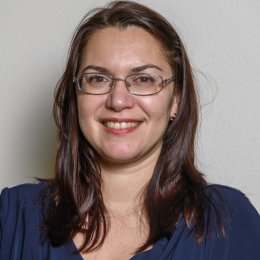Digital twinning has been among the top technological trends in recent years due to its high applicability in various domains. The concept originated from industry and manufacturing and was presented in 2002, focusing on the life-cycle management of a product. Later in 2011, digital twinning was used to create a virtual replica of aircrafts for continuous monitoring, maintenance, and predicting performance. Over the last decade, many efforts have been focused on developing semantic 3D city models for smart city modeling. Such models use various geospatial and remotely sensed information as a basis and go beyond a simple 3D visualization.
3D city models are used in multiple applications such as urban planning, disaster management, solar potential estimation, and air and noise simulations. They are the first step towards implementing the City Digital Twin concept. On 11 October 2022, there will be a seminar at ITC about “AI-driven City Digital Twins”. We spoke with Mila Koeva about this upcoming seminar. Mila is an assistant professor at the ITC Faculty and part of the Digital Twin team at the University of Twente.
'What is the definition of Digital Twins in the geospatial domain?'
Mila Koeva: "There is no commonly accepted definition of Digital Twins in the geospatial domain. The Digital Twin Geohub group defined it as "a digital replica of the physical living environments that supports decision-making through the seamless integration of a myriad of data and analytics techniques”. There is no standalone technology for Digital Twin implementation. Instead, there is an integration of multiple technologies, including big data, Information Modelling (BIM), Geospatial Information Systems (GIS), Internet of Things (IoT), Artificial Intelligence (AI), Virtual Reality (VR), and Urban Decision Support Systems. Moreover, these can be combined with edge computing, cloud computing, and communication technologies. Therefore, the two essential stages of digital twinning are integrating sensor data or data collected from the physical environment and then digitally mimicking it in a virtual world. With technological advances, automating these stages using Artificial Intelligence (AI) algorithms is fundamental."
About the seminar
Mila Koeva: "The seminar on the 11 of October has been inspired by the cooperation between ITC and GATE. We will share the latest research on digital city twinning, based on artificial intelligence, geospatial and remotely sensed data through various use-cases. Further, we hope the discussions will resolve to replicate the current learnings for larger projects"
Research papers about digital twinning
· Digital twin of a city: Review of technology serving city needs
· Extracting Planar Roof Structures from Very High Resolution Images using Graph Neural Networks
· Automatic 3D building model generation using deep learning methods based on cityjson and 2D floor plans
· Building outline delineation: From aerial images to polygons with an improved end-to-end learning framework
· The perception of the vertical dimension (3D) through the lens of different stakeholders in the property market of China







